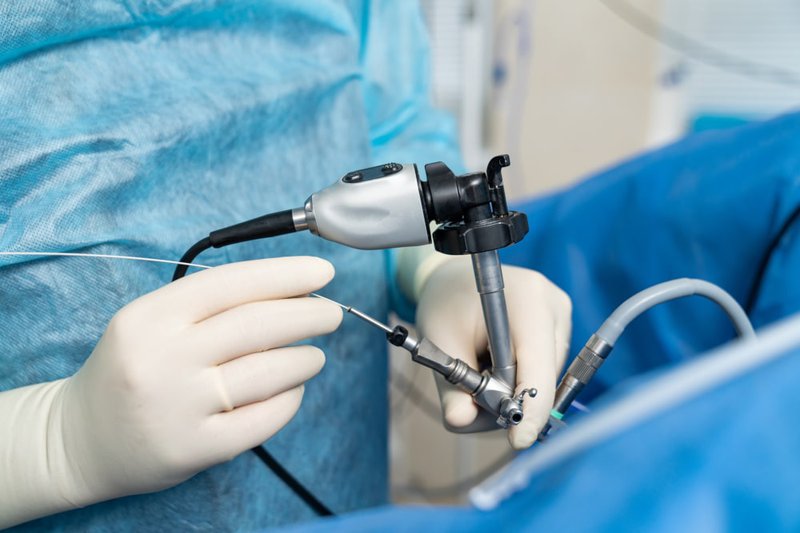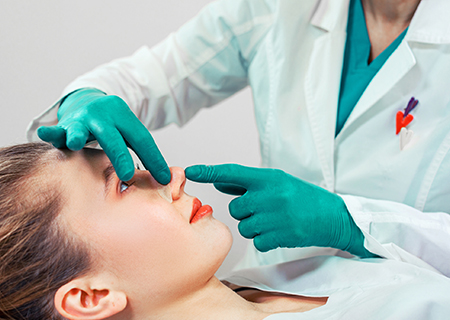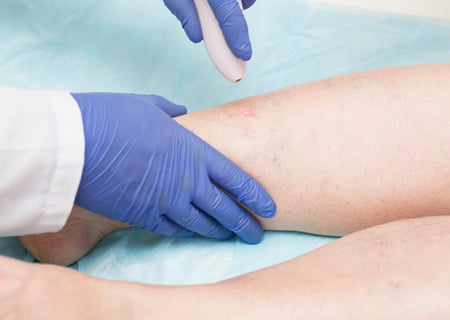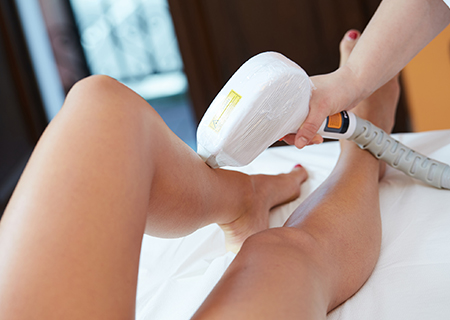Ear Reshaping Explained

Our ears play a pivotal role in framing our facial features, but not everyone is always satisfied with the shape or size of their ears. Luckily, for those seeking to improve their ear aesthetics, ear reshaping, also known as otoplasty , offers a safe and effective solution.
The Psychology Behind Ear Reshaping
Before diving into the technical aspects of ear reshaping, it's essential to understand the psychological factors that drive individuals to seek this procedure.
The decision to undergo otoplasty often stems from personal insecurities related to the appearance of one's ears. Common concerns include:
- Prominent Ears: Ears that stick out prominently can be a source of self-consciousness, especially for children. Teasing and bullying from peers can lead to long-lasting emotional scars.
- Misshapen Ears : Irregularities in the shape or size of the ears can result from genetics or accidents. These irregularities can affect self-esteem and body image.
- Asymmetry : Asymmetrical ears can draw unwanted attention and make a person feel self-conscious about their appearance.
People also search
Understanding these emotional and psychological factors is crucial because ear reshaping not only enhances physical appearance, but also has a profound impact on self-confidence and overall well-being.
Preparing for Otoplasty
Before the otoplasty procedure, you will first undergo a comprehensive consultation with a board-certified plastic surgeon. During this consultation, the surgeon will:
- Assess Your Ears : The surgeon will examine your ears' size, shape, symmetry, and any underlying issues that may affect the procedure.
- Discuss Expectations : You will have the opportunity to discuss your goals and expectations for the surgery. Realistic expectations are crucial to ensure patient satisfaction.
- Medical History : Your medical history will be reviewed to identify any potential risks or contraindications.
- Procedural Details : The surgeon will explain the surgical techniques they recommend, the anesthesia options, and the anticipated recovery period.
Surgical Techniques
There are several surgical techniques used in ear reshaping, depending on the specific goals and anatomy of the patient. Some of the most common techniques include:
- Ear Pinning : Also known as setback otoplasty, this technique is used to address prominent ears. The surgeon will reshape the ear cartilage, positioning the ears closer to the head to achieve a more natural appearance.
- Ear Reduction : For patients with ears that are disproportionately large, ear reduction surgery can help reduce the size of the ears while maintaining a natural look.
- Ear Augmentation : This technique is used to enhance the size and shape of the ears using implants or cartilage grafts. It is often sought by individuals looking to correct congenital deformities or restore lost ear tissue due to injury.
- Earlobe Repair : Earlobe repair is typically performed to correct torn or stretched earlobes, often caused by heavy earrings or trauma.
- Correction of Asymmetry: If one ear is significantly different from the other, surgery can be performed to achieve better symmetry.
The Surgical Process
Typically, the process of adjusting ear shape, also known as otoplasty, can be accomplished with either local anesthesia coupled with sedation or complete anesthesia, based on the intricacy of the operation and your comfort level. Your surgeon will strategically make cuts in areas that aren't easily noticeable, like behind the ear, to keep scarring to a minimum.
After the initial cuts have been made, your surgeon will reconfigure the cartilage, remove any excessive tissue, or tweak it as per the pre-decided surgical blueprint. Stitches will be employed to keep the new form of the ear in place before the cuts are sealed.
Recovery Process and Follow-up Care
Post-otoplasty, individuals may experience some inflammation, discolouration, and unease which can be controlled with analgesics and by adhering to after-surgery care guidelines. A protective covering or bandage will also be put on the ears for safeguarding and support, and should be used as instructed by the medical professional.
It's crucial to steer clear of activities that could potentially cause harm to your ears during the initial healing phase. Generally, people are advised to refrain from vigorous workouts, contact sports, and sleeping on their sides for a couple of weeks.
The healing duration can differ from one person to another, but most people are able to resume their usual activities within a week or two. The ultimate outcome of otoplasty might take a few months to fully appear as the inflammation decreases and the ears adjust to their new form.
Potential Risks: Choosing the Right Surgeon
Like any surgical procedure, otoplasty carries some risks and potential complications, including:
- Infection : Although rare, infection can occur after surgery. Patients are prescribed antibiotics to reduce this risk.
- Scarring : While incisions are typically made in discreet locations, there may still be some visible scarring. Scarring tends to fade over time.
- Asymmetry : Achieving perfect symmetry is challenging, and there may be slight differences between the ears after surgery.
- Suture Complications : Sutures may sometimes become visible or cause irritation. These issues can often be resolved with a minor procedure.
To minimize risks and achieve the best results, it's crucial to select a skilled and experienced plastic surgeon. Look for a surgeon who is board-certified, has a strong reputation, and can provide before-and-after photos of previous otoplasty patients.
During your consultation, don't hesitate to ask questions about the surgeon's experience, the facility where the procedure will take place, and the surgical techniques they plan to use. Your comfort and confidence in your surgeon are essential for a successful outcome.
Life After Otoplasty
Improved Confidence
One of the most significant benefits of otoplasty is the boost in self-confidence it can provide. Many people who undergo ear reshaping surgery report feeling more comfortable in social situations and experiencing a positive change in their self-image.
Long-lasting Results
The results of otoplasty are typically permanent, making it a worthwhile investment in your appearance and self-esteem. However, it's essential to maintain a healthy lifestyle and protect your ears from trauma to ensure the longevity of your results.
Emotional Well-Being
The emotional benefits of otoplasty extend beyond aesthetics. Patients often report reduced anxiety, improved self-esteem, and increased self-assuredness, leading to a better overall quality of life.
Who Is a Suitable Candidate for the Procedure?
Otoplasty is a cosmetic surgical procedure designed to reshape the ears. It is typically sought by those who are unhappy with the size, shape, or position of their ears.
Suitable candidates for otoplasty include:
- Children and Teens : Otoplasty can be performed on children as young as five years old. It is often recommended for children who are experiencing social or psychological distress due to prominent or misshapen ears. The earlier the procedure is done, the less likely it is that the child will face teasing or bullying.
- Adults : Otoplasty is also an option for adults who want to address ear-related aesthetic concerns or correct congenital deformities.
Before considering otoplasty, it's essential to have a consultation with a board-certified plastic surgeon who can assess your individual needs and discuss whether you are a suitable candidate for the procedure.
When Can I Expect to See Results Following My Procedure?
The recovery process following otoplasty can vary from person to person, but here are some general guidelines:
- Immediate Post-Op : After the procedure, patients can expect some swelling, bruising, and mild discomfort. Pain medication is typically prescribed to manage any discomfort.
- Dressing and Bandages : A bandage or dressing will be applied to the ears for protection and support. Patients are usually advised to wear this dressing for a specific period as recommended by the surgeon.
- Activity Restrictions : It's important to avoid activities that could potentially damage the ears during the initial healing phase. Patients are typically advised to refrain from strenuous exercise, contact sports, and sleeping on their sides for a few weeks.
- Results : While some improvement in the appearance of the ears is noticeable immediately after the bandages are removed, it may take a few months for the final results to fully manifest. As swelling subsides and the ears settle into their new shape, you'll see the long-term benefits of the procedure.
It's crucial to follow your surgeon's post-operative care instructions diligently to ensure a smooth and successful recovery.
What Are the Potential Risks and Complications Associated with Otoplasty?
Like any other surgical procedure, otoplasty carries some inherent risks and potential complications, including:
- Infection : Although rare, infection can occur after surgery. Patients are typically prescribed antibiotics to reduce this risk.
- Scarring : While incisions are typically made in discreet locations, there may still be some visible scarring. However, scarring tends to fade over time.
- Asymmetry : Achieving perfect symmetry is challenging, and there may be slight differences between the ears after surgery. This is why it's essential to choose an experienced surgeon who can minimize these discrepancies.
- Suture Complications : In some cases, sutures may become visible or cause irritation. These issues can often be resolved with a minor procedure.
It's essential to have a thorough discussion with your surgeon about the potential risks and complications before undergoing otoplasty. A skilled surgeon will take steps to minimize these risks and ensure a safe procedure.
How Long Does the Otoplasty Procedure Typically Take?
The duration of an otoplasty procedure can vary depending on several factors, including the complexity of the case and the specific technique being used. However, on average, otoplasty surgery typically takes between one to two hours.
Here's an overview of what you can expect during the otoplasty procedure:
- Anesthesia: The surgery is performed under either local anesthesia with sedation or general anesthesia, depending on the surgeon's recommendation and your preferences. Your surgeon will discuss the anesthesia option during your pre-operative consultation.
- Incisions : The surgeon will make incisions in discreet areas, such as behind the ears, to access the ear cartilage. These incisions are strategically placed to minimize visible scarring.
- Cartilage Reshaping : Once the incisions are made, the surgeon will reshape the ear cartilage as needed to achieve the desired aesthetic outcome. This may involve repositioning, removal of excess tissue, or other adjustments.
- Suturing : After the cartilage is reshaped to the desired form, the surgeon will use sutures to secure the ear in its new position. These sutures are typically placed internally to maintain the ear's natural shape.
- Dressing and Bandages : Following the procedure, a bandage or dressing will be applied to protect the ears and support the newly shaped cartilage. This dressing will remain in place for a specified period, as recommended by your surgeon.
Is Otoplasty a Painful Procedure?
The intensity of discomfort felt during ear correction surgery can differ among individuals, with many reporting a mild to average level of unease rather than extreme pain. The unease usually stems from inflammation and the pressure exerted by dressings or bandages used to provide post-operative ear support.
To alleviate discomfort during the recuperation period, your medical professional will recommend suitable pain management drugs, which may range from non-prescription analgesics to more potent prescribed medications. Adhering to your medical professional's advice for medication intake is essential to ensure your ease during the initial recovery phase. Moreover, using cold packs and maintaining your head in an elevated position can assist in minimizing inflammation and unease.
At the end of the day, ear reshaping, or otoplasty, is a cosmetic surgery procedure that can have a profound impact on your physical appearance and emotional well-being. Whether you’re seeking otoplasty to correct prominent ears, address asymmetry, or enhance the overall appearance of your ears, it's a procedure that offers lasting results and improved self-confidence.
If you're considering otoplasty, it's crucial to consult with a board-certified plastic surgeon who can assess your unique needs and guide you through the process. The decision to undergo otoplasty is a personal one, and it's essential to have realistic expectations and a clear understanding of the procedure's benefits and potential risks.
At Facial Cosmetic Surgery, our experienced surgeons are here to help, and are dedicated to helping you achieve the ears you’ve always dreamed of having while ensuring your safety and satisfaction. Contact our team at Facial Cosmetic Surgery today to schedule your consultation and take the first step toward a more confident and happier you.
















